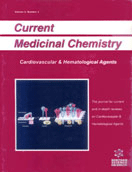Abstract
Thrombin converts fibrinogen to fibrin and is the most powerful activator of platelets thus playing a crucial role in arterial and venous thrombosis. The limitations of heparin, largely used in the therapy of arterial and venous thromboembolism, has prompted the development of new antithrombotic drugs, able to directly inhibit thrombin. They comprise hirudin, bivalirudin and argatroban, which are antithrombins for parenteral use, and the orally active ximelagatran which, once absorbed, is converted to the active compound melagatran. Hirudin is a polypeptide able to irreversibly block both the active site and the fibrin(ogen) binding site of thrombin; bivalirudin, a synthetic hirudin derivative, has the same binding sites of hirudin to thrombin but has a shorter pharmacological action and is safer for clinical use. Several clinical trials which tested these drugs in acute coronary syndromes, coronary angioplasty and venous thromboembolism, demonstrate that hirudin and bivalirudin are superior to heparin in significantly reducing cardiac major events. The advantage of hirudin and bivalirudin over heparin was also confirmed in adjuncts to thrombolytic therapy as well as in percutaneous angioplasty relating to thrombotic events but not to restenosis. Hirudin was also significantly better than both unfractionated heparin and low molecular weight heparin (LMWH) in the prophylaxis of venous thromboembolism in patients undergoing elective arthroplasty. Major bleeding associated to hirudin was not different from that observed with heparin. Preliminary data also indicate that melagatran / ximelagatran may be used in the prophylaxis of venous thromboembolism and in the prevention of arterial embolism in patients with non-valvular atrial fibrillation.
Keywords: anticoagulants, hirudin, thrombin, thrombosis, acute coronary syndromes, venous thromboembolism
 2
2













